-
 Written by Thomas Frenkiel
Written by Thomas FrenkielThomas has over 10 years of marketing experience. After working in media and SEO agencies for 8 years, he joined Funnel in 2022.
In a world where marketing advice is abundant but insight is scarce, it helps to know which resources are truly worth your time. Whether you’re refining your go-to-market strategy, building brand equity or rethinking measurement, the right materials can sharpen your thinking and give you an edge.
Below, we’ve curated five foundational marketing books and six standout reports — a mix of theory, evidence and practical application to help you grow both your brand and your brain.
5 marketing books that will change how you think
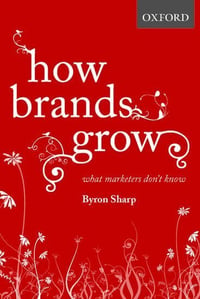
1. How Brands Grow – Byron Sharp
The most important marketing book of the past 20 years. Sharp challenges many popular assumptions, arguing that growth comes from increasing market penetration, and mental and physical availability, rather than loyalty or heavy buyers. This evidence-based approach will transform how you think about reach, brand penetration and media strategy.
Here are the key takeaways we found in this brilliant book:
- Use distinctive brand assets relentlessly. Colors, logos, taglines, tone, it's repetition that builds recognition.
- Advertise for memory, not persuasion. Keep it simple, emotional, and memorable.
- Include light buyers in strategy. They drive volume even if they buy rarely.
- Track penetration and mental availability. Those are better indicators of growth than engagement or sentiment metrics.
- Consistency over novelty. Keep showing up in the same recognisable way, again and again.
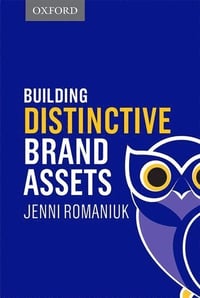
2. Building Distinctive Brand Assets – Jenni Romaniuk
A companion to How Brands Grow, this book offers a framework for creating and consistently using recognizable brand elements — like logos, colors, characters and taglines — to improve recall and buying behavior. Essential for brand builders.
Interestingly, some of the key takeaways we found in this book overlapped with How Brands Grow:
-
Be consistent. Repeat core visuals and language; avoid constant reinvention.
-
Be recognizable without a logo. Colors, tone, and design should signal your brand instantly.
-
Use emotion and repetition. Embed assets in memory through frequent, high-reach use.
-
Stand out from your category. Avoid generic cues that competitors also own.
-
Measure and protect. Track how distinctive each asset remains over time.
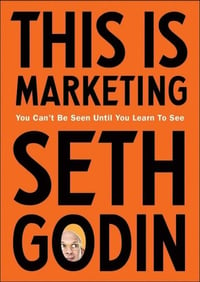
3. This is Marketing – Seth Godin
Godin makes the case for empathetic, long-term marketing. His mantra? Find the smallest viable audience, build trust and create real value. A refreshing, human-centered counterpoint to growth-at-all-costs thinking.
There is a lot packed into this book to impact your marketing strategy, but our favorite takeaways were this:
-
Start with empathy. Understand the people you seek to serve, not just the product you want to sell.
-
Focus on the smallest viable audience. Make real change for a specific group before trying to reach everyone.
-
Build trust and connection. Marketing is about belonging and shared values, not manipulation.
-
Tell a story people want to believe. Align your narrative with their worldview and desires.
-
Create something remarkable. Make work worth talking about; word-of-mouth is the best marketing.
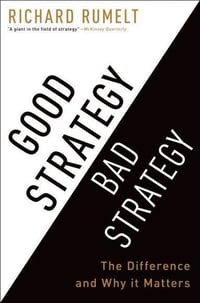
4. Good Strategy, Bad Strategy – Richard Rumelt
This isn’t a marketing book per se, but every marketer (and marketing strategy) needs it. Rumelt outlines how to identify key challenges and craft coherent strategies. You’ll never confuse goals with strategy again.
Here's what we loved about Good Strategy, Bad Strategy:
-
Diagnose the real problem. Understand what’s truly blocking progress before deciding what to do.
-
Focus your energy. Strategy is about making choices, not chasing every opportunity.
-
Create a guiding policy. Define a clear approach that aligns actions and decisions across the team.
-
Coordinate coherent actions. Ensure every initiative supports the same overarching goal.
-
Avoid fluff. Vague aspirations or buzzwords aren’t strategy; clarity and precision are.
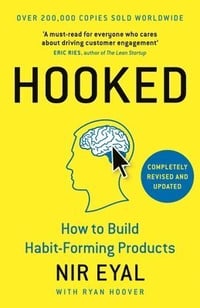
5. Hooked – Nir Eyal
For product marketers and growth teams, Eyal’s “Hook Model” (Trigger → Action → Variable Reward → Investment) explains the psychology behind habit-forming products. A must-read on behavior design.
Interested in what we learned from reading this book? Here are our main takeaways:
-
Understand the Hook Model. Every habit loop includes trigger → action → reward → investment.
-
Start with internal triggers. Identify the emotions or needs that make users seek your product.
-
Simplify the action. Reduce friction so users can act with minimal effort.
-
Deliver variable rewards. Keep engagement high with surprises, progress, or social validation.
-
Ask for small investments. Each user action (like saving data or customizing) increases commitment.
6 must-read reports for 2024-2025
If you’re looking for credible, research-backed guidance on what actually drives growth, these reports are essential reading. They distill data from top-performing teams and leading research firms.
1. The Effectiveness Equation – Google & Kantar (2025)
This report explores how long-term brand building and short-term activation interact in digital environments. Using econometric modeling, it shows that brand investment delivers compounding returns over time.
2. The Multiplier Effect – WARC (2025)
Integration is the new superpower. WARC shows that combining brand and performance efforts doesn’t dilute ROI — it amplifies it. Backed by case studies and industry data.
3. Compound Creativity – System1 & IPA (2024)
Emotionally resonant, creatively distinctive ads drive better business outcomes. This study explains how to optimize both reach and emotional impact.
4. Fluent Devices – System1 (2019)
Ever notice the power of recurring brand characters and taglines? This report proves they boost both emotional engagement and long-term profitability.
5. The Triangulation Tango – Funnel (2024)
At Funnel, we believe great measurement blends perspectives. This report explains how to unify MMM, MTA and incrementality testing for smarter, more holistic attribution. Perfect for teams wrestling with fragmented metrics in 2025.
6. LinkedIn B2B Benchmark Report 2024 – LinkedIn & Ipsos (2024)
Based on a survey of 2,000 senior B2B marketers, this benchmark identifies what separates high-performing teams — AI adoption, creative investment, measurement maturity and more.
Never stop learning
Whether you’re crafting a new campaign, refining your measurement strategy or just staying sharp, these resources are a great place to start. They reflect what we care about at Funnel: marketing that’s measurable, creative and truly effective.
Curious how we apply these ideas ourselves?
Check out our posts on marketing measurement, or book a session with our team to dive deeper.
-
 Written by Thomas Frenkiel
Written by Thomas FrenkielThomas has over 10 years of marketing experience. After working in media and SEO agencies for 8 years, he joined Funnel in 2022.
